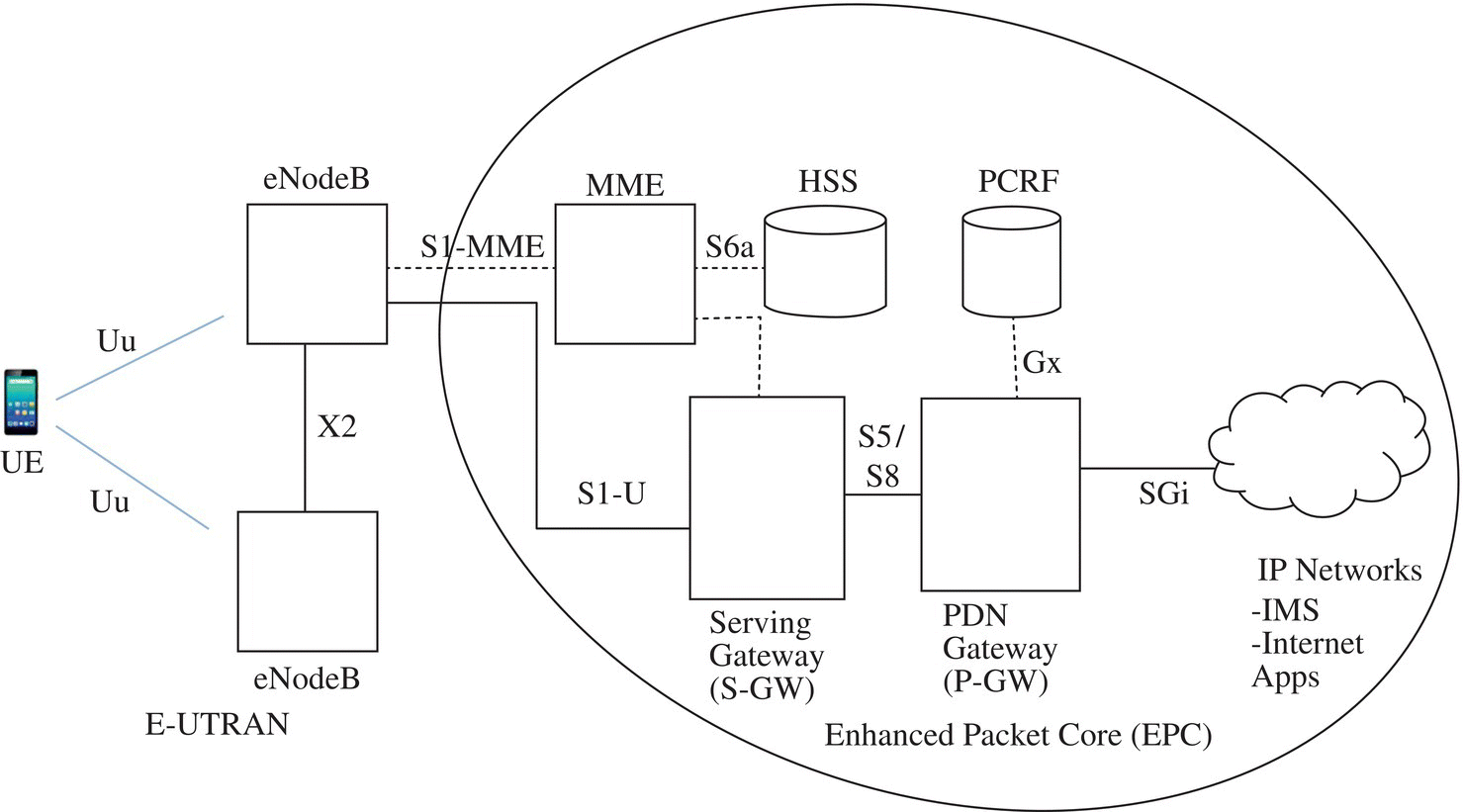94G Core Network Planning and Optimisation
9.1 Introduction
We have seen in Chapter 8 the basics of 4G radio network planning and optimisation. Unlike in Universal Mobile Telecommunications System or UMTS networks, base stations are directly connected to the core network. The core network in LTE is not only quite enhanced (enhanced packet core) but also sets the foundation for technologies of the future, including that of 5G. Here in LTE, we have only the packet core that is known as the Evolved Packet Core (EPC).
9.2 Basics of EPC Network Planning
Core network planning has always been an important part of network planning. In LTE, this has become even more important. The scope of LTE EPC network planning is shown in Figure 9.1.

Figure 9.1 Scope of LTE EPC network planning.
9.2.1 Scope of EPC Network Planning
Beyond the eNodeBs, everything falls under core network planning. The important elements that are involved include MME, S‐GW, HSS, and P‐GW. Before going into detail, let us consider some of the key concepts that define the LTE core network.
9.2.2 EPC Network Elements
As we have seen in a previous chapter, 3GPP has evolved to a three‐layered architecture from a four‐layered architecture. 3GPP focused on three main aspects for EPC development: the core network should support high data rates and low latency; the core network should have the ability to support 3GPP, 3GPP2, ...
Get Fundamentals of Network Planning and Optimisation 2G/3G/4G, 2nd Edition now with the O’Reilly learning platform.
O’Reilly members experience books, live events, courses curated by job role, and more from O’Reilly and nearly 200 top publishers.

